Taxidermied Birds Collection
Curator: Igor Fadeev.
The collection contains
6 465 specimens. Along with collections of taxidermied animals and skins of
mammals, this is one of the basic collections of Darwin Museum.
The
following families are most widely represented in the collection: the subfamily
Tetraoninae - 650 specimens, Hummingbirds (family Trochilidae) - 530 specimens,
the Phasianidae family - 380 specimens, the Anatidae family - 382 specimens, Sandpipers
(Scolopacidae) - 332 specimens, the Accipitridae family - 218 specimens. The collection holds a significant number of taxidermied animals from private
collections of famous zoologists P. Sushkin, M. Menzbir, N. Bobrinsky, G. Dementiev.
Some
magnificent taxidermied animals of undoubted scientific and historical interest
were made of skins brought from Tibetan expeditions of Nikolay Przhevalsky.
They are the Tibetan snowcock (Tetraogallus tibetanus), the eared pheasant, the
Tibetan sandgrouse (Syrrhaptes tibetanus ), the Himalayan monal (Lophophorus
impejanus), the white-capped water redstart (Phoenicurus leucocephalus). There
is also a taxidermied white-capped water redstart made from the skin brought by
the famous French Lazarist missionary Catholic priest as well as a zoologist
and a botanist, Chinese explorer Armand David.
The most important scientific division is the collection of grouse birds with color
variations (the black grouse, the western capercaillie, the hazel grouse, the true
partridges) - more than 600 specimens. The collection has been formed by Alexander
Kohts since the beginning of the twentieth century. Later, it was replenished
by specimens from private collections.
No less
significant is the natural hybrids of grouse selection, including 42 specimens
of the black grouse and western capercaillie hybrids, 2 specimens of the western
capercaillie and black-billed capercaillie hybrids, 2 specimens of black grouse
and hazel grouse hybrids, 14 specimens of the black grouse and willow ptarmigan
hybrids.
An
interesting collection of various types of taxidermied Palaearctic falcons (112
specimens) - gyrfalcons, saker falcons, peregrine falcons, and Eurasian hobbies.
Of
considerable interest are also taxidermied tropical birds, especially the
Hummingbirds, Birds-of-paradise (112 specimens), Tangara, Cotingas, Sunbirds, Common
kingfishers.
Of
particular value is the taxidermy mounts of extinct species of birds, such as
the great auk, the huia, the passenger pigeon and the extinct flightless dodo
(Raphus cucullatus) from the island of Mauritius. The collection includes a
number of taxidermy mounts made of bird skins, obtained by famous foreign
ornithologists - Alfred Hart Everett on the Philippine Islands and the island
of Borneo (Kalimantan), Albert Stewart Meek (also known as an entomologist) on
the island of New Guinea, William Frederick Henry Rosenberg in Colombia.
To be noted
is the collection of breeds of poultry - 520 specimens, about 400 of which are
various breeds of domestic hens, including ones that are rare and currently
extinct. In the second half of the twentieth century, some breeds of chickens lost
their value/popularity for various reasons and therefore seized to exist. The taxidermied
hens of these breeds that are part of Darwin museum collection serve as examples
of their exterior. Based on these materials in the 80s and 90s, amateur poultry
breeders made successful attempts to restore some of the extinct breeds,
including the Orloff and the Pavlovsky chicken.
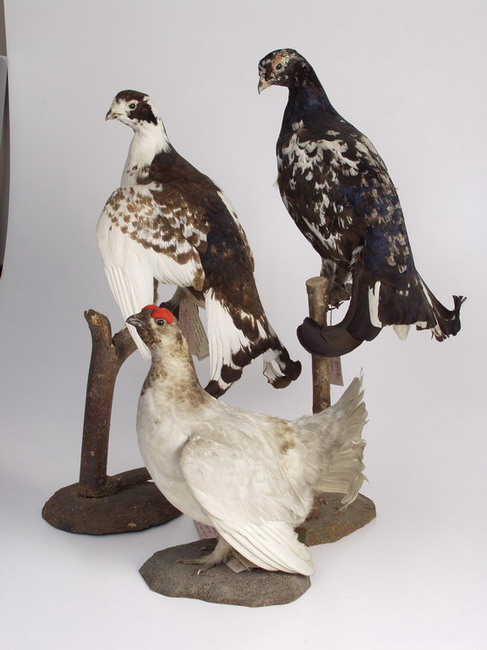
Abnormal coloration
of the plumage of male black grouse (Lirurus tetrix L.).
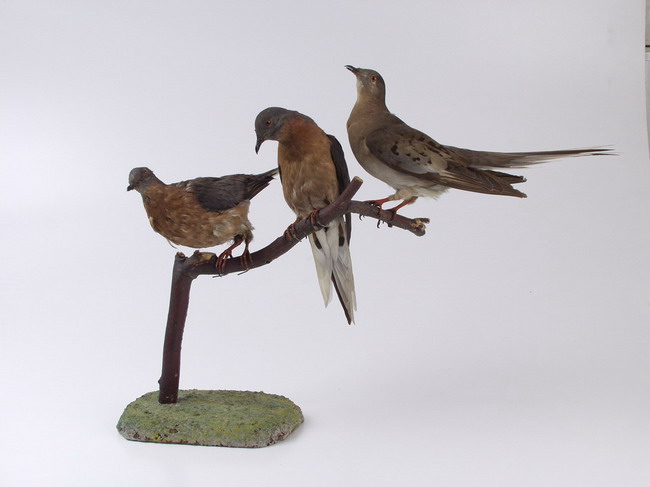
Taxidermied
extinct passenger pigeons (Ectopistes migratorius L.).
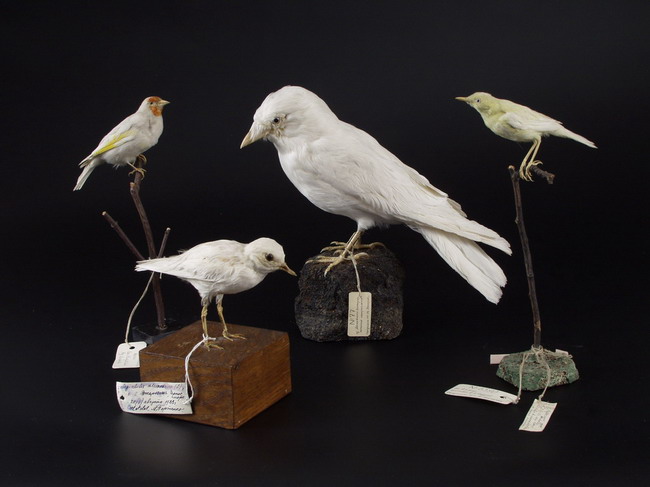
Albino
birds.
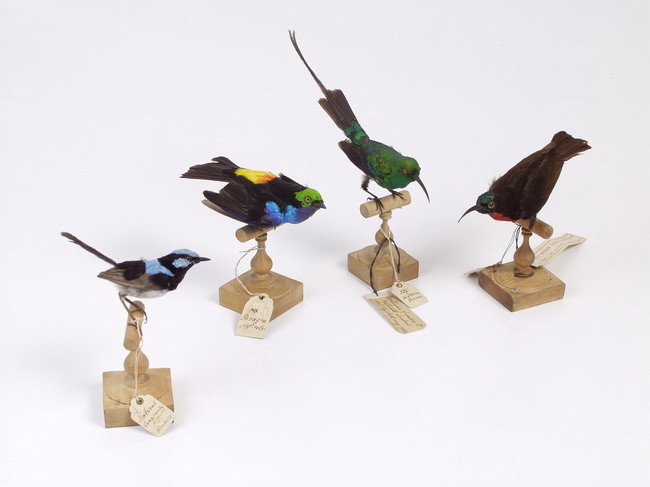
Tropical
birds.
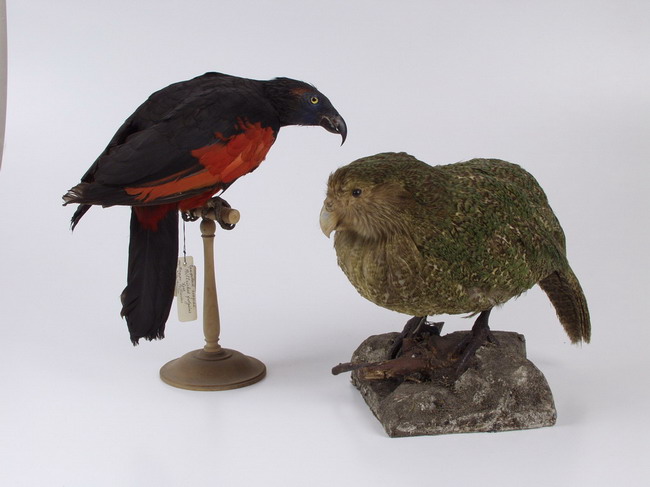
Vulturine parrot (Psittrichas fulgidus Lesson, 1831) on the left, and an owl parrot aka kakapo (Strigops habroptilus Gray) on the right.












